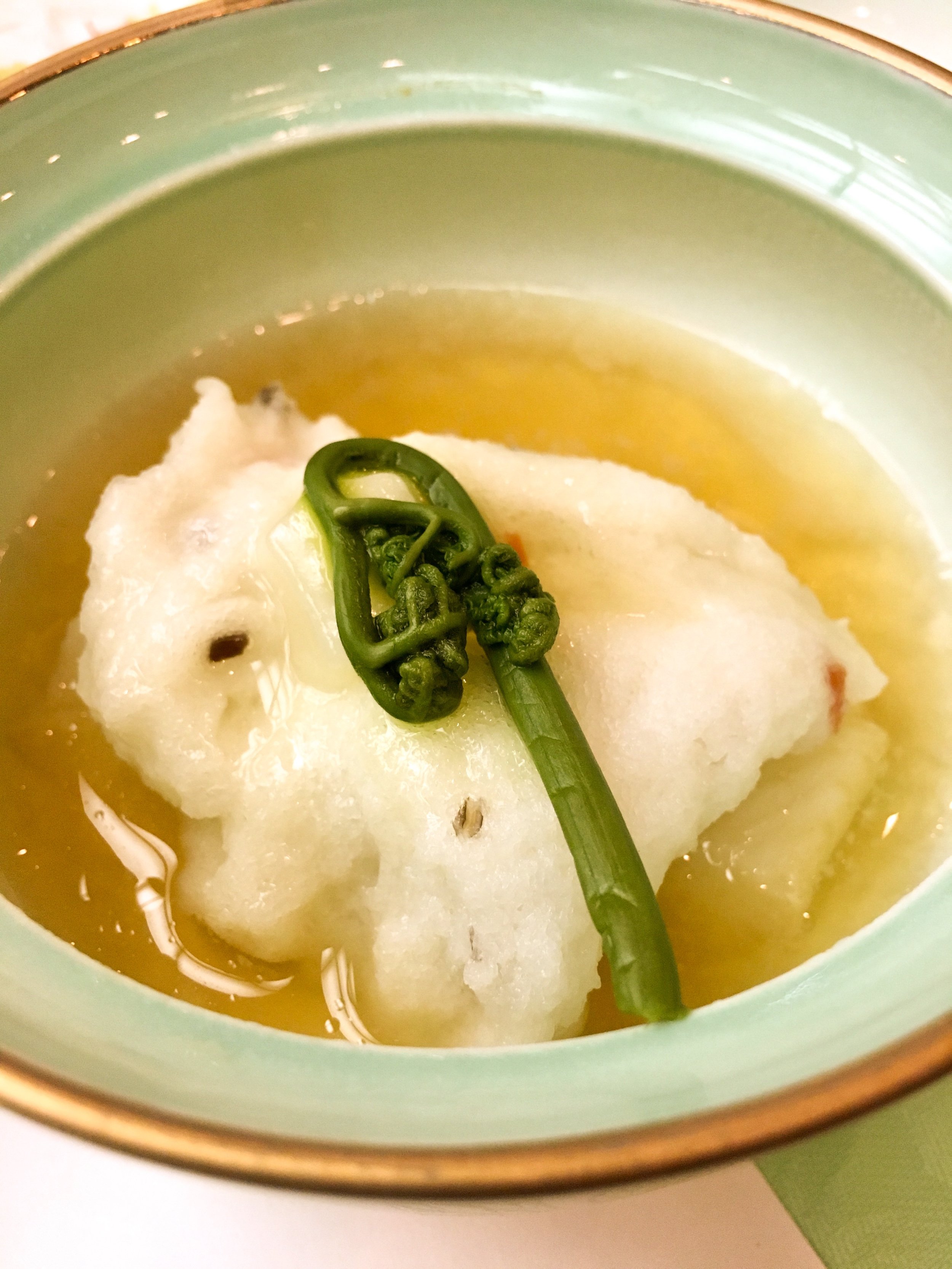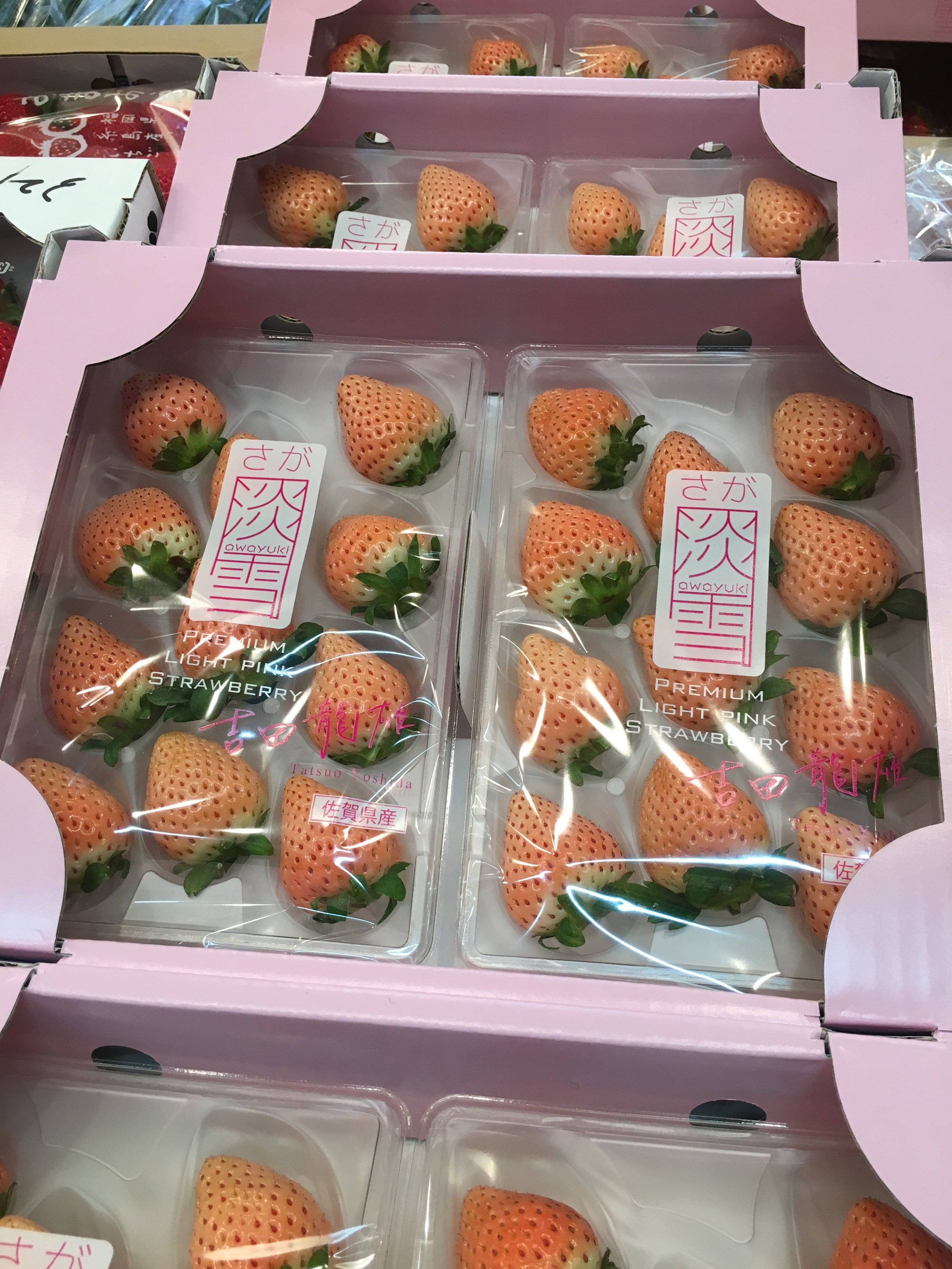Experiencing a memorable holiday in kyushu
Year of the dog by Kayo Kokubun
Traditional Kyushu New Year Appetizer with Mountain veggie
A bit late, but we wanted very much to post some belated words and images about our trip to Kyushu to celebrate the New Year Holiday in Japan. A quick, very quick primer: In Japan, New Year is a three day event from Japan 1-3. And, of course there are preparations that go into making all of the foods and festivities associated with Oshogatsu. And pretty much all businesses are closed. Yes, we knew this going in.
We took a shinkansen to Fukuoka and spent two days and nights exploring the vibrancy that this now third-largest city in Japan exudes. This was during the two days leading up to Oshogatsu. Fukuoka had a lot of energy and we really loved our time there.
At Shrine in Hakata
From there, we went to Nagasaki -- a place we have wanted to visit for a very long time, and it was akin to venturing into a home away from home in another world. It was all and more than we expected. We knew that many places would be closed because of the Holiday, but we found much to do and see and explore and soak up. We spent New Years day with two longtime friends of Ria’s in the hills above Nagasaki with all of the food that symbolizes and makes New Year so special in Japan - osechi. It was an amazing afternoon and evening, eating and drinking sake with Ria’s old friends and my new ones. The food was amazing, the sake delicious and the company perfect. It was hard to say goodbye.
For our last few days in Kyushu, we ventured into the countryside, which required me to drive for the first time in Japan. I’ve been there a few dozen times, but never had to drive, but I grew up around Detroit in Michigan, so I’ve done my share of driving -- it was just that everything is opposite. Once you get your brain to think opposite, you’re fine. At least it was for me.
On our next to last day, we went to Arita in Saga Prefecture, which is famous for ceramics, especially porcelain with elaborate painting -- likely an influence from China and Korea as Nagasaki was the only port open to foreigners in the Edo Period and before. The town was empty. It was like walking on a movie set depicting Japan 100 years ago.
We don’t want to give too much away on this post about this part of the trip, but we literally stumbled on a budding artist and great guy working in his closed shop who motioned us in. We spent the whole afternoon there.
Thoughts and wishes for many at Miyajidake Shrine in Fukuoka
His name is Tsukasa Momota. We will talk more about our time with him and introduce his works in our next post. Stay tuned.
From there, we went to Nagasaki -- a place we have wanted to visit for a very long time, and it was akin to venturing into a home away from home in another world. It was all and more than we expected. We knew that many places would be closed because of the Holiday, but we found much to do and see and explore and soak up. We spent New Years day with two longtime friends of Ria’s in the hills above Nagasaki with all of the food that symbolizes and makes New Year so special in Japan - osechi. It was an amazing afternoon and evening, eating and drinking sake with Ria’s old friends and my new ones. The food was amazing, the sake delicious and the company perfect. It was hard to say goodbye.
For our last few days in Kyushu, we ventured into the countryside, which required me to drive for the first time in Japan. I’ve been there a few dozen times, but never had to drive, but I grew up around Detroit in Michigan, so I’ve done my share of driving -- it was just that everything is opposite. Once you get your brain to think opposite, you’re fine. At least it was for me.
On our next to last day, we went to Arita in Saga Prefecture, which is famous for ceramics, especially porcelain with elaborate painting -- likely an influence from China and Korea as Nagasaki was the only port open to foreigners in the Edo Period and before. The town was empty. It was like walking on a movie set depicting Japan 100 years ago.
We don’t want to give too much away on this post about this part of the trip, but we literally stumbled on a budding artist and great guy working in his closed shop who motioned us in. We spent the whole afternoon there.
His name is Tsukasa Momota. We will talk more about our time with him and introduce his works in our next post.
At Yanagibashi Market in Fukuoka
Motsu nabe, staple in Fukuoka
Saga light snow strawberry
On the Famous Road of Light at at Miyajidake Shrine in Fukuoka...Well-Known for the beautiful sunsets.










